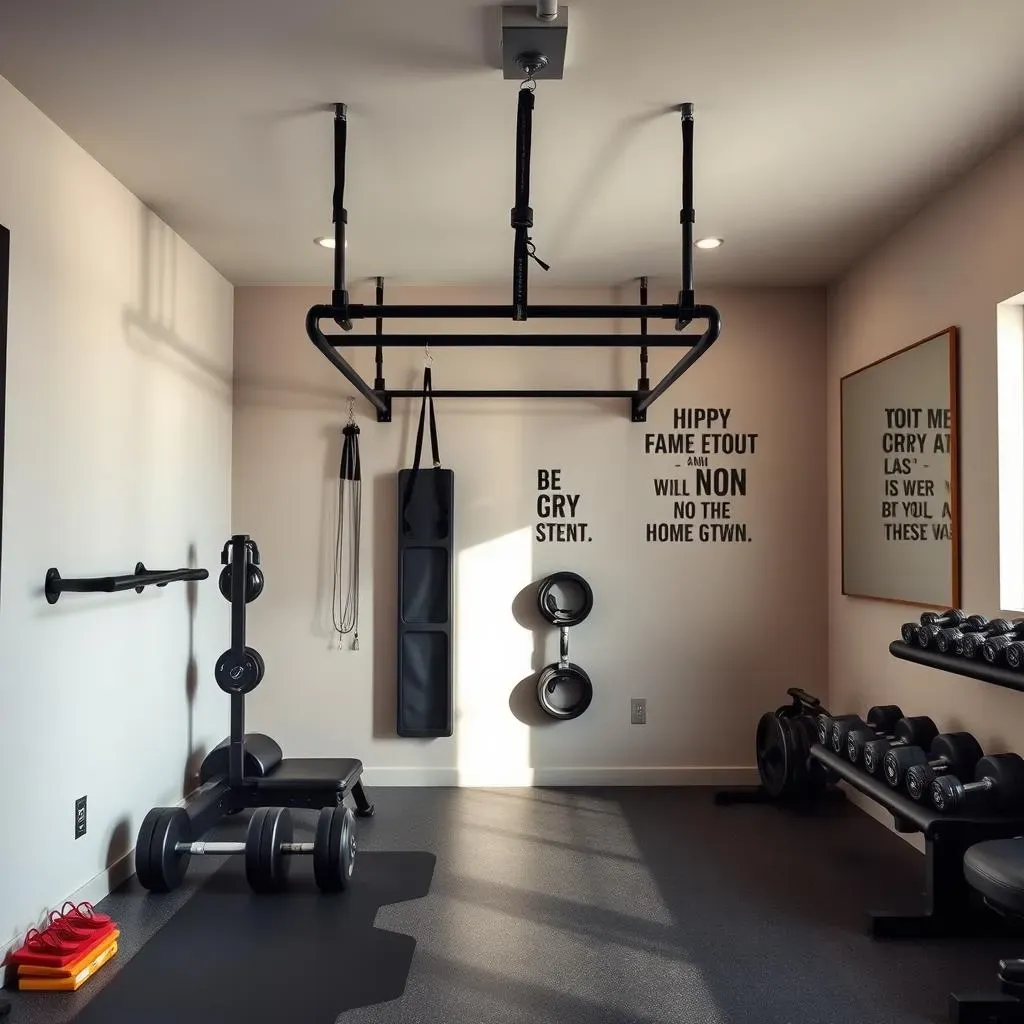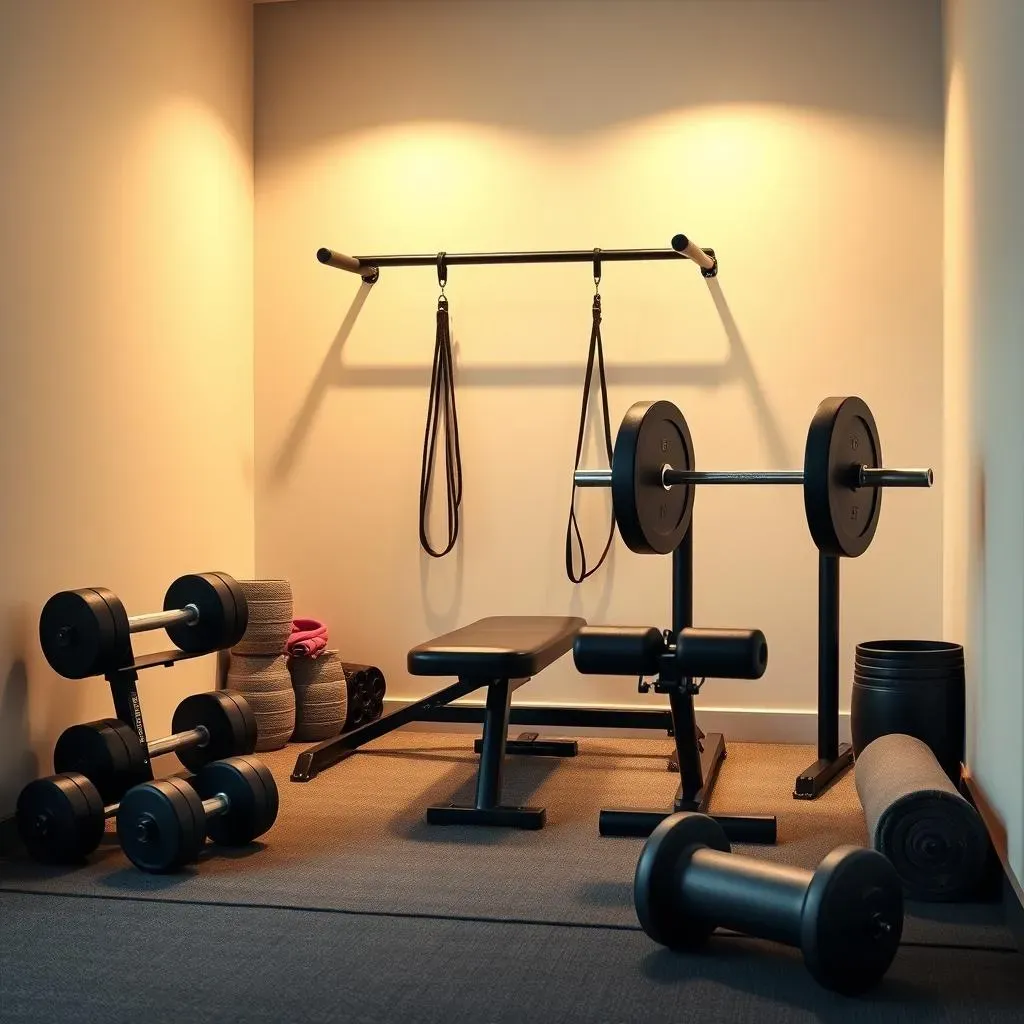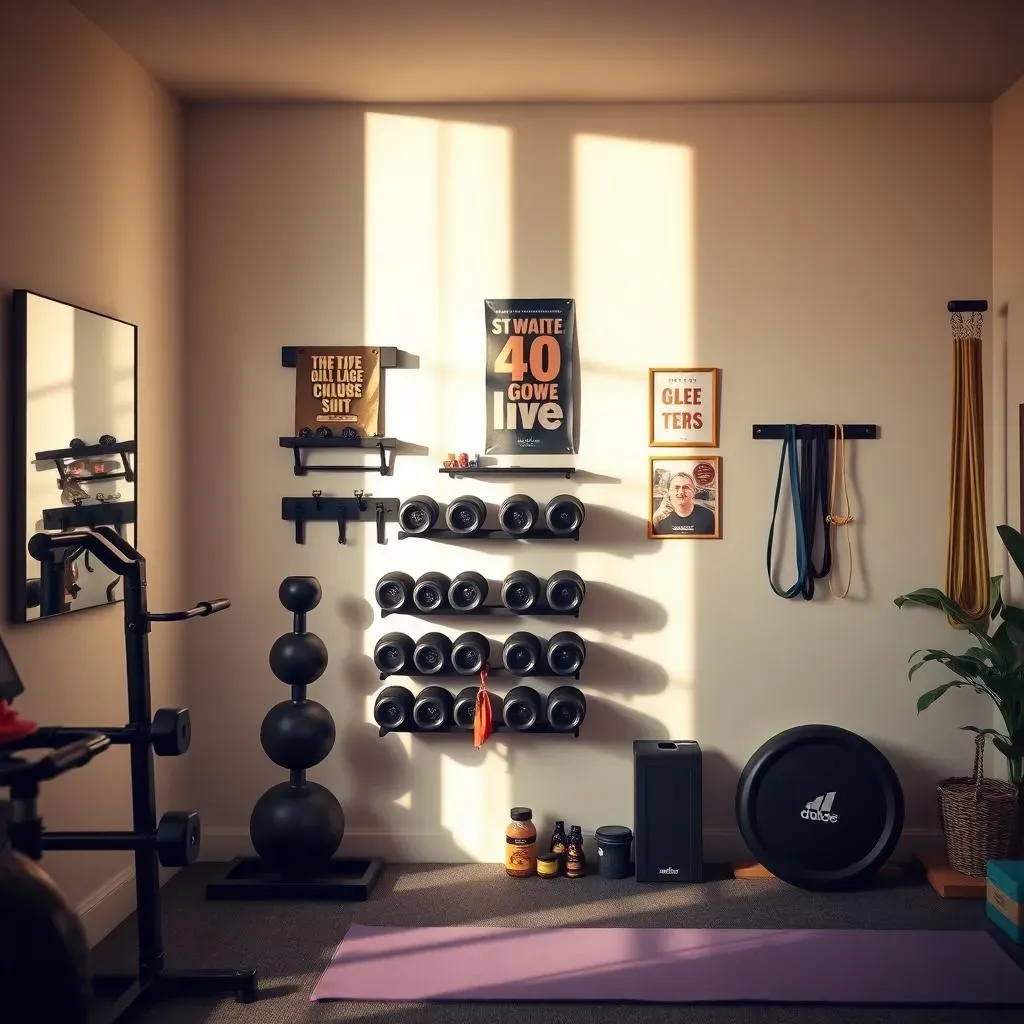Table of Contents
Tired of crowded gyms and inconvenient workout schedules? I get it, I've been there, squeezing in sets between someone's loud phone call and the guy who insists on grunting like a wild boar. That's why I decided to take matters into my own hands and design my own home gym. It wasn't some overnight, magazine-ready transformation, trust me. It was a process of figuring out what I actually needed, what would fit, and how to make it look less like a storage unit for dusty exercise equipment. If you’re thinking about creating your own workout haven, you are in the right place. This article will guide you through the essentials of home gym equipment design, from planning your space to picking the right gear. We’ll explore how to avoid common pitfalls, and I'll share some insights I wish I had known before I started. Get ready to say goodbye to gym commutes and hello to workouts on your own terms.
Planning Your Home Gym Equipment Design
Planning Your Home Gym Equipment Design
Assessing Your Space and Needs
Before you even think about buying a single dumbbell, take a good, hard look at your space. Seriously, don't just eyeball it. Grab a measuring tape and jot down the dimensions of your potential gym area. Is it a spare bedroom? A corner of the basement? A converted garage? Each space has its own challenges and opportunities. Think about the ceiling height, especially if you're planning on doing any overhead exercises. Now, be honest with yourself about your fitness goals. Are you a cardio junkie, a weightlifting enthusiast, or a flexibility fanatic? Your preferred workout style will heavily influence the type of equipment you need. Don't get swayed by the latest fitness trends if they don't align with your personal goals.
I made the mistake of buying a huge treadmill before realizing my ceiling was too low to comfortably use it. It was a very expensive clothes rack for a while. Learn from my mistakes, measure twice, buy once. Consider also the flooring, will you be dropping weights? You might want to consider rubber mats. What about ventilation? Nobody wants a sweaty, stuffy gym. So, before anything else, know your space and know what you actually want to achieve. This will save you a lot of money and frustration in the long run.
Budgeting and Prioritizing
Alright, let's talk money. Home gym equipment can get expensive really fast, like "I-just-accidentally-bought-a-small-car" expensive. So, before you start adding everything to your online cart, set a realistic budget. What are you willing to spend? What are the must-have items and what are the nice-to-have items? Start with the essentials, the things you know you'll use regularly. Maybe that's a set of adjustable dumbbells, a sturdy bench, or a pull-up bar. You can always add more fancy gadgets later. Don't fall into the trap of buying the most expensive, high-tech equipment if it doesn't fit your needs or budget.
I remember thinking that I needed a cable machine, until I realized I could do most of the same exercises with resistance bands which are much cheaper. Prioritize what's essential and then slowly add to your gym as your fitness journey progresses. It's much better to have a functional gym with a few quality pieces than a room full of unused equipment. Remember, the most important piece of equipment is your own body, so don't overspend on things that you don't really need. Also, don't forget to budget for things like storage solutions, mirrors, and maybe a killer sound system to keep you motivated.
Priority | Equipment Type | Example | Consideration |
|---|---|---|---|
High | Strength Training | Adjustable Dumbbells | Versatile, space-saving |
High | Bodyweight Training | Pull-up Bar | Simple, effective |
Medium | Cardio | Jump Rope | Affordable, portable |
Low | Specialized Machines | Cable Machine | Can be expensive, space-consuming |
Selecting the Right Home Gym Equipment
Selecting the Right Home Gym Equipment
Essential Strength Training Gear
so you've got your space, and you've got a budget, now it's time for the fun part, picking out the equipment. For strength training, let's start with the essentials. Adjustable dumbbells are a fantastic choice because they're so versatile and save space. You can go from light warm-ups to heavy lifts without needing a whole rack of weights. A sturdy weight bench is another must-have. Make sure you get one that's adjustable for incline and decline positions, so you can work different muscle groups. I've always said that a good bench is like the foundation of any good home gym. Don't underestimate the power of a good pull-up bar. You can mount one in a doorway or get a free-standing one. It's not just for pull-ups, you can also use it for hanging leg raises and other core exercises.
I remember when I first started out, I got a cheap bench and it wobbled so bad, I felt like I was going to flip over. Lesson learned, invest in quality, especially when it comes to things that hold heavy weights. Don't forget about resistance bands, they are super versatile for assisting or adding resistance to your workout. They are also great for stretching and mobility work. So, to recap: adjustable dumbbells, a solid bench, and a pull-up bar are must-haves. Don't forget the resistance bands; they're like the Swiss Army knife of fitness gear.
Cardio and Flexibility Equipment
Now, let's move on to cardio and flexibility. If you're a cardio enthusiast, a jump rope is a simple, cheap, and effective tool. It's easy to store and great for getting your heart rate up. I used to underestimate it, but now I use it almost daily for warm ups. If you have the budget and the space, a treadmill or elliptical can be a good option, just make sure you actually like running or using the elliptical, and that you will actually use it. Don't buy something just because it looks cool. For flexibility, a good yoga mat is essential. It's not just for yoga, it's also useful for stretching, core work, and just having a comfortable surface to do floor exercises.
Foam rollers are great for self-massage and releasing muscle tension, and they can be super helpful if you are a bit tight from your workouts. I remember when I first started using a foam roller, I thought it was a torture device, but now I can't live without it. Lastly, don't forget about things like a speed ladder. It is great for agility and footwork, and it's a fun way to mix up your routine. Don't get caught up in thinking you need expensive machines to get a good workout. Sometimes the simplest equipment is the most effective. Focus on tools that fit your needs, your space, and your budget.
Equipment Type | Example | Benefits |
|---|---|---|
Strength | Adjustable Dumbbells | Versatile, space-saving |
Strength | Weight Bench | Supports various exercises |
Strength | Pull-up Bar | Effective upper body training |
Cardio | Jump Rope | Affordable, portable cardio |
Flexibility | Yoga Mat | Comfortable surface for stretching |
Flexibility | Foam Roller | Releases muscle tension |
Optimizing Your Home Gym Design and Space
Optimizing Your Home Gym Design and Space
Layout and Flow
Alright, so you've got your equipment, now it's time to think about how to arrange it. A good layout is key to making your home gym functional and enjoyable. You don't want to be tripping over dumbbells while trying to do burpees, trust me on that one. Think about creating zones for different types of exercises. Have a dedicated area for strength training, a space for cardio, and a corner for stretching and flexibility work. This will help you stay organized and focused during your workouts. Leave enough space around each piece of equipment so you can move freely and safely. You don't want to feel cramped and claustrophobic, you want your gym to feel like a place where you can move and breathe. I made the mistake of packing all my equipment in one corner, and I felt like I was doing workout in a closet, it was awful. So, think about the flow of your workout and arrange your equipment accordingly.
Also, consider the lighting. Nobody wants to workout in a dark and gloomy space. Natural light is always great, but if that's not an option, make sure you have adequate artificial lighting. Mirrors are also a great addition to any home gym. Not only do they help you check your form, but they also make the space feel bigger and brighter. When you are planning the layout, always ask yourself: "Is this a space that I'm actually going to enjoy spending time in?" If the answer is no, you need to rethink it. It's not just about having equipment; it's about creating an environment that motivates you to work out.
Storage and Organization
let's talk about storage. Because let's face it, without a good storage system, your home gym will quickly turn into a chaotic mess. You need a designated spot for everything, from dumbbells to resistance bands to yoga mats. I'm a big fan of wall-mounted racks and shelves. They save a ton of space and keep things off the floor. Also, consider using storage bins or baskets to keep smaller items organized and easy to find. I use some old milk crates for some of my lighter weight equipment, and they do the job. Don't underestimate the power of a good storage system. It will save you time and frustration, and it will make your gym look much more appealing.
Also, think about making your gym more personal. Add some motivational posters, your favorite workout playlist, or maybe a plant or two to bring some life into the space. It’s all about creating a space that you actually enjoy being in. If you are looking for inspiration, I would say look at some interior design books or magazines. You can get some great ideas about how to organize and decorate your space. Remember, your home gym is an extension of your personal fitness journey, so make it a space that inspires you. With a bit of planning and creativity, you can transform any space into a functional and inspiring home gym.
Element | Consideration | Action |
|---|---|---|
Layout | Zoning for different activities | Create dedicated areas for strength, cardio, and flexibility. |
Lighting | Adequate illumination | Ensure good natural or artificial lighting. |
Mirrors | Form check and space enhancement | Install mirrors to monitor form and make the space feel larger. |
Storage | Organization and space-saving | Use wall-mounted racks, shelves, and bins. |
Personalization | Motivation and enjoyment | Add posters, music, and plants to make the space inviting. |
Wrapping Up Your Home Gym Design Journey
Creating a home gym is a personal project, it's not a one-size-fits-all situation. It’s about making fitness a convenient and enjoyable part of your life. It's not about having the fanciest equipment or the biggest space, it’s about having a space that motivates you to move. It's an ongoing journey of tweaking and refining. From selecting the right equipment to optimizing your layout, remember to keep your goals and needs at the forefront of your design process. So, go ahead and build that space, you might just surprise yourself with what you can achieve, not just physically but also in your design skills.